House Sparrow Blues
One of our favorite Thanksgiving Day activities is enjoying a sumptuous meal while watching chickadees, nuthatches, cardinals, and woodpeckers enjoy the seeds we put out for them just outside our window.
Thanksgiving 2023 brought mostly frustration. Crowds of House Sparrows swarmed our feeders with hardly a native bird in sight. Formerly known as English Sparrows, there seem to be more of these pesky immigrants every year.
Strategies
We’re not alone. A common phone call or email that comes to Winding Pathways seeks ways to feed native birds and discourage hordes of House Sparrows. Over the years we’ve tried these things to discourage the hardy and prolific Eurasian birds:
- Putting only small amounts of feed out in the early morning and late afternoon when native birds visit and House Sparrows are mostly gone.
- Cutting silo feeder perches short to make it harder for the somewhat clumsy sparrows to perch and eat.
- Sprinkle some whole corn on the lawn. It’s too big for sparrows to eat but blue jays and woodpeckers devour it.
- Sprinkle cracked corn way out in the backyard to entice sparrows away from our main feeders.
- Eliminate sparrow nesting sites around our yard and pull out any nests that form under eaves or in tight spaces along the house.
Result
None of these has worked particularly well.
Others More Fortunate
While we are frustrated, other people are fortunate. We recently enjoyed watching a procession of native birds visiting Jody Vrieze’s feeders in a rural area near Charles City, Iowa. It’s along the Cedar River and away from town. Perhaps her home and yard are a key to avoiding sparrow numbers.
- Jays swallow large nuts.
- Cardinals enjoy eating on the ground.
- Woods attract native birds.
- Many woodpeckers come to the feeders.
- Open water is important for wildlife.
- Peanut butter log.
What is a Synanthrope? How Do They Spread?
They are true synanthropes, meaning they need to live close to people. Backpack into a wilderness anywhere and House Sparrows are one bird that won’t be spotted. Jody’s home is in a wooded area away from town, which is probably why the pesky birds don’t visit her feeders often.
Although not liked by most birders, House Sparrows are amazing. A few were captured in Europe and released in Brooklyn, NY, in 1851. Within 50 years they had spread across the continent and are found in and near almost every town and farm. They may have peaked in numbers late in the 1800s when abundant urban horse manure provided plenty of food.
Although native to Europe and Asia, House Sparrows have spread, due to people importing them, to North and South America, Australia, New Zealand, and parts of Africa. A surefire place to not see them is Antarctica.
- Eating from platform feeder
- Thick beak of house sparrow is good for cracking corn.
Winding Pathways Asks for Help
Most people share their suburban and urban homes with plenty of House Sparrows, and moving to a wild area isn’t an option. So, what to do? Well, we listed what we do yet still have plenty of sparrows, so we’re asking for help from visitors to our Winding Pathways website. Please let us know if you’ve found a consistent and effective way to discourage this pesky bird.
Learn More
For much more information on this amazingly prolific bird go to allaboutbirds.org.
Photos by Jody Vrieze.

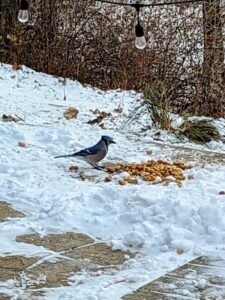
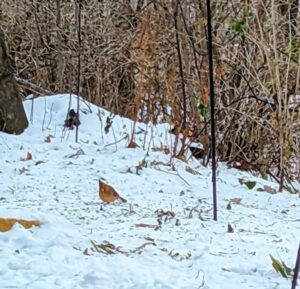
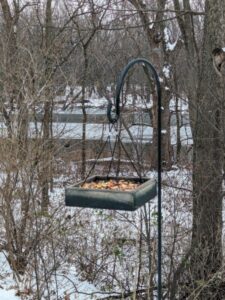
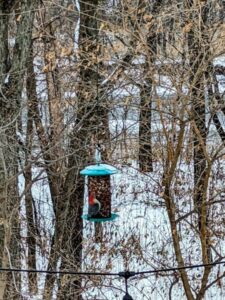
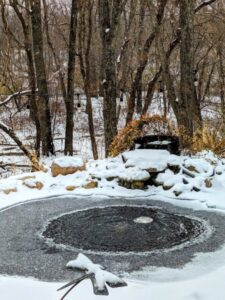
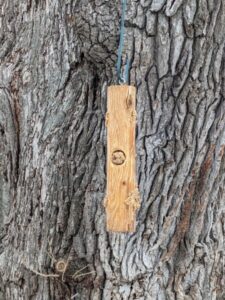
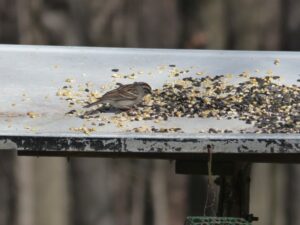
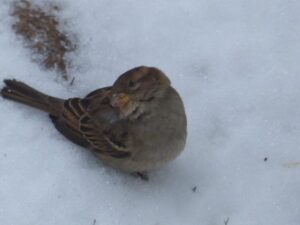

We came across a device called Magic Halo, recommended in the Iowa Birding Facebook group. We bought it through this website a few weeks ago for one of our four feeders. https://www.magichalo.org/?m=1
It’s working!
We’ll take a look, Amy. thank you. M~
Why do sparrows keep the native birds away? Simply by consuming all the food we put out? We have tried everything to keep sparrows from nesting on our house…but yet, they do…
Thank you for your tips
We will try them! Does it seem more prevalent since derecho?
Lisa, we have found that most native birds come in small groups most of the year. (Exceptions occur). House (English) sparrows breed quickly and come in huge flocks. They do eat so much food and also may intimidate the native birds by their numbers.
We have begun to put out whole corn which is too big for the sparrows to eat. Peanuts in feeders, again too big. The smaller birds pick up the scraps and the woodpeckers, nut hatches, blue jays seem to do OK with these. The house sparrows still come but seem not as much the past two weeks. However, they DO learn quickly so we are not convinced the changes we have made in feeding will hold.